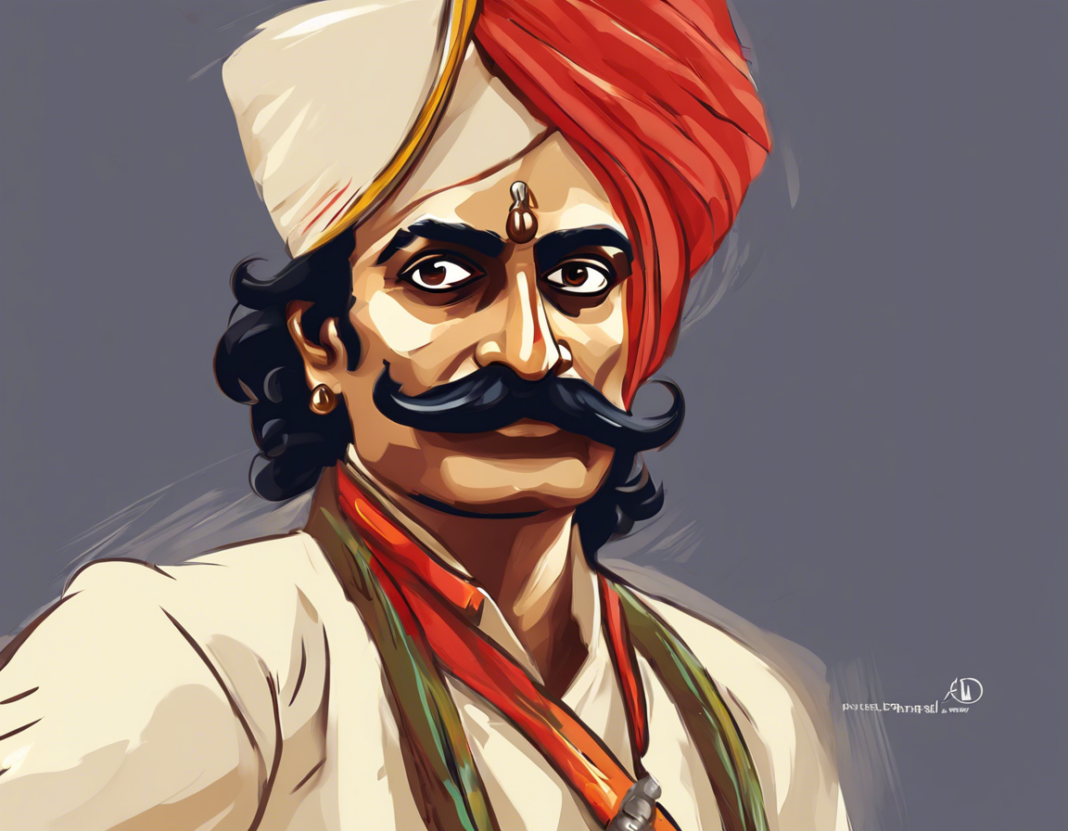Introduction:
Mangal Pandey, a name that resonates with the spirit of rebellion and revolution, played a pivotal role in India’s fight against British colonial rule. His courageous act of defiance in 1857 sparked the flames of the Indian Mutiny, a significant turning point in the history of India’s struggle for independence. Let’s delve into the revolutionary story of Mangal Pandey and unveil the hero who stirred the hearts and minds of countless individuals with his indomitable spirit.
Early Life and Background:
Mangal Pandey was born in 1827 in the village of Nagwa, in the present-day state of Uttar Pradesh, India. He was a member of the 34th Bengal Native Infantry regiment in the British East India Company’s army. Pandey was a skilled marksman and a dedicated soldier who took immense pride in his Indian heritage and culture. His deep-rooted sense of patriotism and commitment to his country would eventually propel him towards a historic act of defiance against British tyranny.
The Spark of Rebellion:
The year 1857 marked a period of growing discontent and resentment among Indian soldiers in the British East India Company’s army. The introduction of the new Enfield rifles greased with animal fat, which was offensive to both Hindu and Muslim soldiers, served as the catalyst for widespread outrage and rebellion. On March 29, 1857, in Barrackpore, Mangal Pandey defied his British superiors by refusing to use the cartridges and incited his fellow soldiers to join him in revolt against the oppressive regime.
The Revolt and its Aftermath:
Pandey’s bold defiance and subsequent attack on British officers at Barrackpore instigated a wave of rebellion across northern India. The Indian Mutiny of 1857, also known as the First War of Independence, spread rapidly, with sepoys and civilians joining forces to overthrow British rule. Although the rebellion was eventually quelled by British forces, the impact of the uprising was profound, leading to significant changes in British policy towards India and the eventual dissolution of the East India Company’s rule.
The Legacy of Mangal Pandey:
Mangal Pandey’s act of defiance and sacrifice transformed him into a symbol of courage and resistance against colonial oppression. His unwavering commitment to his country and his willingness to stand up against injustice inspired generations of freedom fighters in India’s struggle for independence. Pandey’s legacy lives on as a reminder of the indomitable spirit of those who dared to challenge the might of the British Empire and paved the way for the eventual liberation of India.
The Myth and Controversy:
Over the years, the story of Mangal Pandey has been subject to mythologization and controversy, with differing accounts of his motivations and actions. Some portray him as a heroic figure who single-handedly sparked the flames of rebellion, while others question the extent of his role in the larger context of the Indian Mutiny. Despite these varying interpretations, one fact remains undisputed – Mangal Pandey’s defiance played a crucial role in igniting the spirit of resistance that ultimately led to India’s independence.
FAQs:
1. Who was Mangal Pandey and what role did he play in India’s struggle for independence?
Mangal Pandey was a soldier in the British East India Company’s army who defied British authority and sparked the Indian Mutiny of 1857, a significant uprising against colonial rule in India.
2. What was the significance of Mangal Pandey’s act of rebellion in 1857?
Mangal Pandey’s defiance inspired a wave of rebellion across northern India and played a crucial role in galvanizing support for the larger movement against British colonial rule.
3. How did Mangal Pandey’s legacy impact the Indian independence movement?
Mangal Pandey’s legacy as a symbol of courage and resistance inspired future freedom fighters and served as a potent reminder of the power of individual acts of defiance in the face of oppression.
4. What were the key factors that led to the Indian Mutiny of 1857?
The introduction of the new Enfield rifles greased with animal fat, which offended religious sensibilities, along with simmering discontent among Indian soldiers, economic grievances, and social inequalities, all contributed to the outbreak of the Indian Mutiny of 1857.
5. How is Mangal Pandey remembered in modern-day India?
Mangal Pandey is celebrated as a national hero in India, with memorials, statues, and cultural references paying tribute to his role in India’s struggle for independence and his unwavering commitment to justice and freedom.

